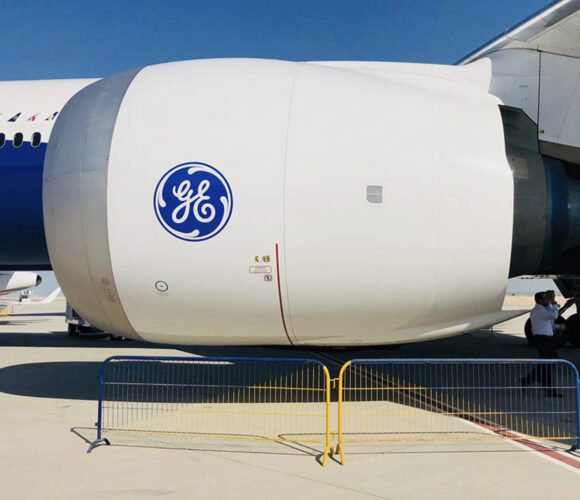Pratt & Whitney has developed an intriguing noise attenuation system for turboprop engine inlet ducts. The company has filed a patent application. The item comprises a “deformable wall” made of flexible material with integrated acoustic cells. The wall transitions between un-deformed and deformed positions in response to a hydraulic-piston actuator, to narrow the effective cross sectional area of the inlet duct and reduce line-of-sight noise propagation. More information can be found here.According to the patent description, the system may be deployed during flight approach or landing operations to reduce the level of community noise. The two red arrows point out where the flexible wall is located within the engine inlet.
The use of noise attenuating materials is growing. Making engines ever quieter is good. This trend is also being developed on other noisy parts of the the aircraft like the wing. Turboprops are relatively quiet now. But for residents living near airports (Billy Bishop in Toronto comes to mind) even quieter turboprop engines and wings would be a welcome technology leap.
Views: 19





The wing?
The wing doesn’t make much noise. Well… I suppose when there are large discontinuities in flap settings and deployment you could say it does – but modern aircraft have much more integrated flap deployment schedules.
Compare:
https://upload.wikimedia.org/wikipedia/commons/f/f7/British_Airways_Boeing_747-400_(G-BNLX)_arrives_London_Heathrow_15Sep2015_arp.jpg
with:
http://techno-science.net/illustration/Aero/A380/Montage/Arriere.jpg
“Wing” noise is essentially a solved problem, it just needs new designs to roll out through the fleet.
The landing gear does make noise, but there are already many research programs on fairings over landing gear bogeys to try to mitigate this, i.e.
http://www.nap.edu/openbook/12928/xhtml/images/p2001bcf4g58002.jpg
These have still to be incorporated onto new designs on the board.